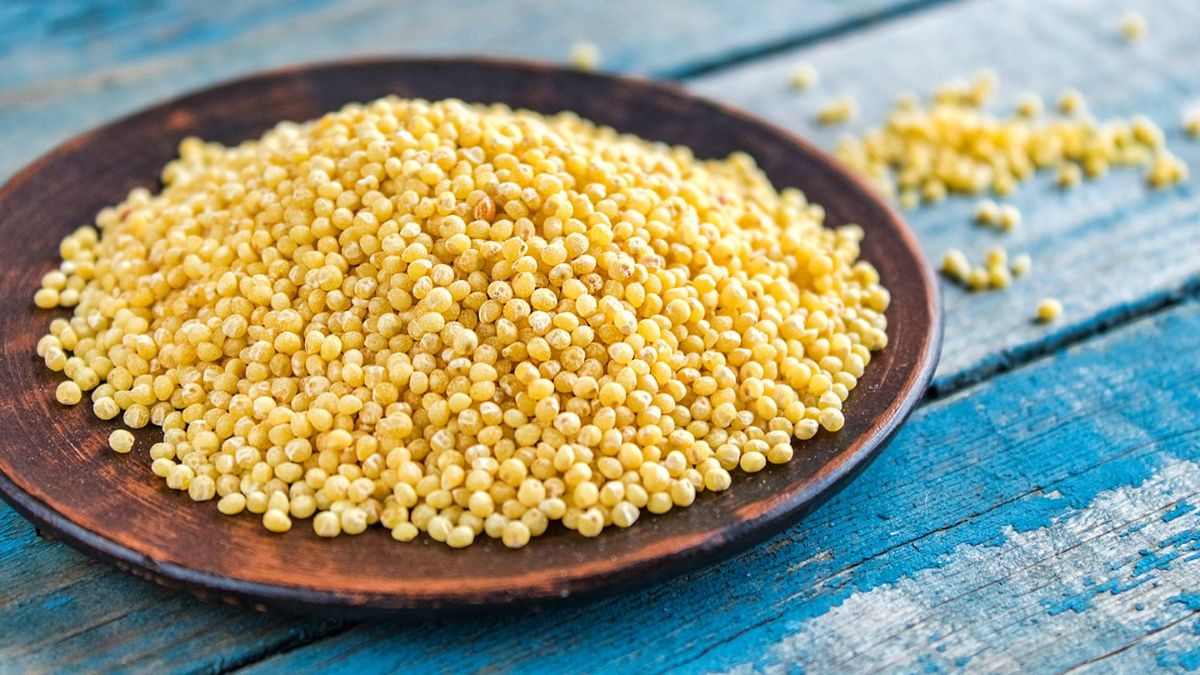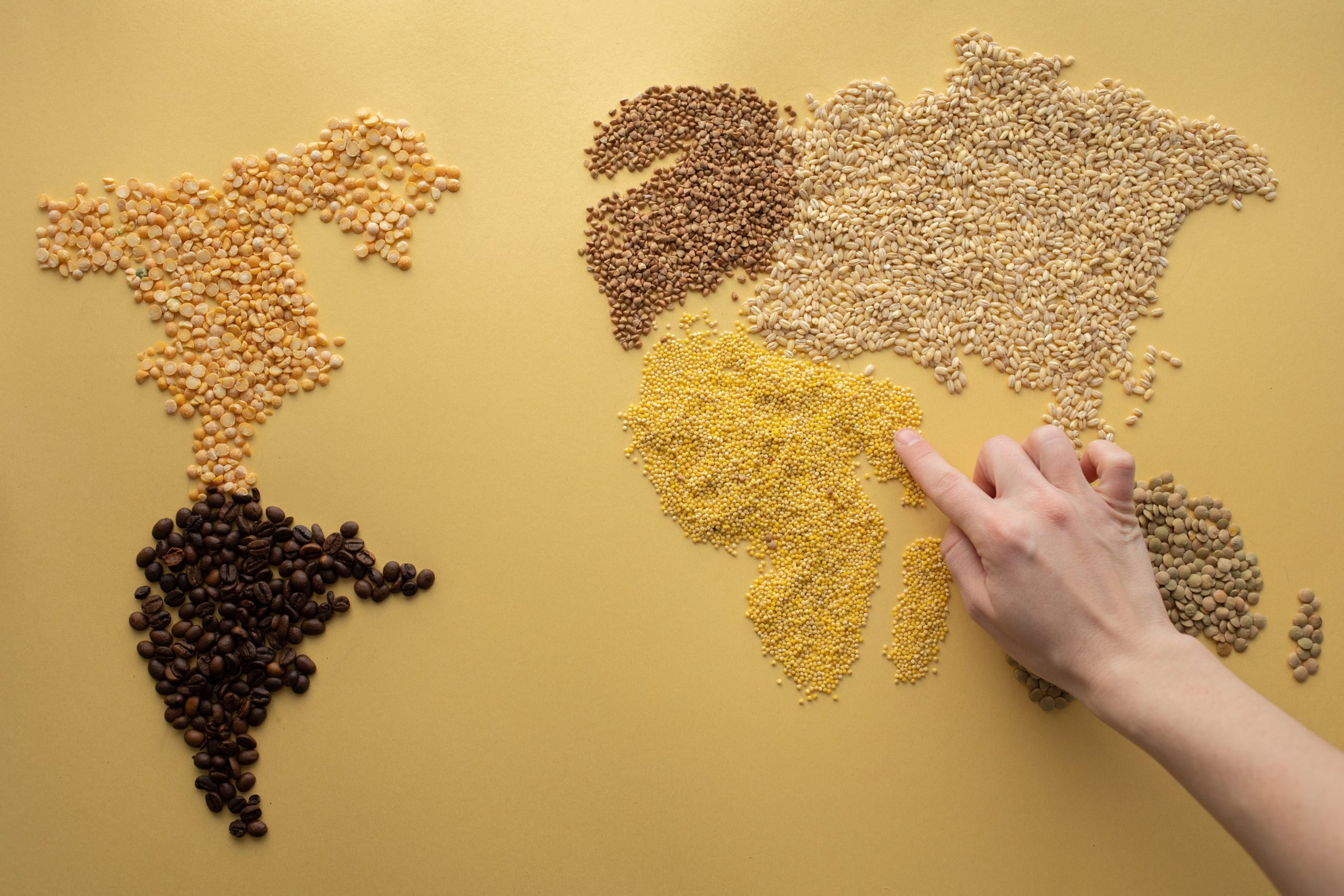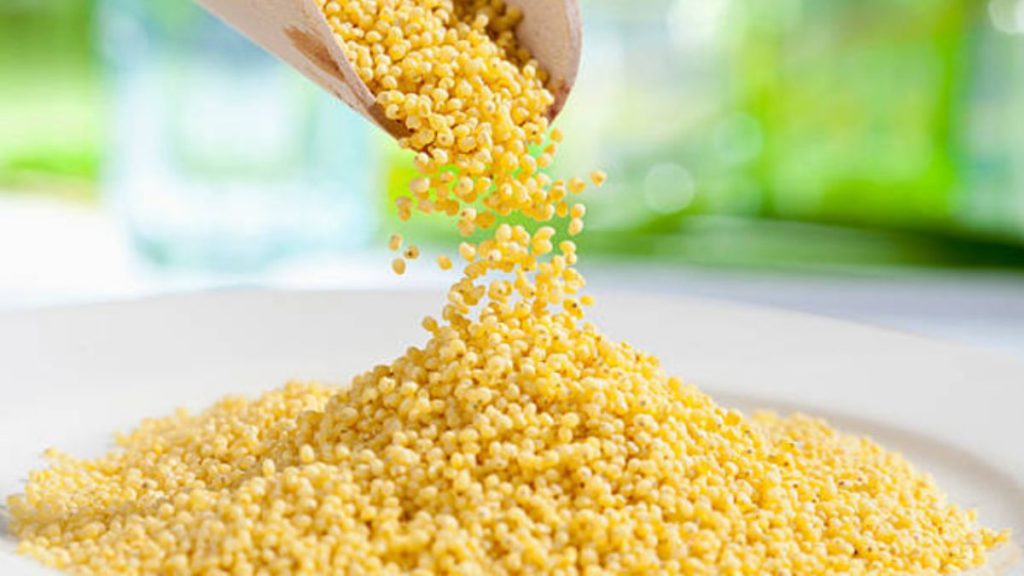People in the United States might think of Millet as the main ingredient in birdseed. But Millet is a staple food in a third of the world, including parts of Africa, Asia, and Eastern Europe. It was one of the first grains to be grown, and there are now more than 6,000 different kinds worldwide. It is the main ingredient in flatbreads, beer and other fermented drinks, and porridges.
Many gluten-free loaves of bread sold in the U.S. are made with millet flour, either by itself or in combination with flour made from other gluten-free grains. Even though Millet is a seed, it acts as whole grain and can be cooked the same way you would cook rice or quinoa.
It is a seed that is a whole grain. It is often used to feed birds. It’s not just for the birds, though. This naturally gluten-free cereal contains minerals like potassium and magnesium, and each serving is packed with a lot of protein. It tastes a little bit like corn and cooks like rice or quinoa. It goes well in salads, a side dish, a breakfast porridge, or even bread and cakes. Before cooking it, you can toast Millet to bring out its nuttier or earthier notes. This will give your food a richer flavor.
What is Millet?
The name “millet” is used for a group of grains from the grass family Poaceae but are not all the same. They look like tiny corn kernels and cost about a quarter as much as quinoa, making them one of the most affordable grains. They don’ have gluten in them either. Like many other whole grains, Millet can Milletught as flour or flakes.
Before maize was brought to Sub-Saharan Africa, millet was Milletrain that most people ate. Even 50 y ars ago, it was still the most popular grain. People say that Millet, esMilletly pearl, came from Africa before it was brought to Asia. The Natio al Research Council says that pearl millet was domesticated in West Africa more than 4,000 years ago. fonio and finger millet are two other kinds of millet (rapoko).
It is much more nutritious than maize and contributes much more to the food economy of Africa. However, due to the amount of scientific research and money put into growing maize, Millet is Milletger used as the main staple food. This is a shame because the plant is resistant to drought, needs less watering than maize, and could be used to ensure enough food for everyone.
What does it Taste Like?
It is a whole grain that is on the sweeter end of the scale. Some people e say it tastes like corn, and it also t kes on the taste of the ingredients in a sauce or a dressing easily. But Cooke millet hasMilletffy texture like mashed potatoes or steamed rice, which makes it different from other whole grains like chewy barley, buckwheat, or farro. But, like those whole grains, millet hasMilletghtly nutty flavor brought out by toasting.
Types of Millet
There are more than 20 different types of Millet. Some of the more common varieties include:
- pearl (Pennisetum glaucum)
- finger (Eleusine coracana)
- foxtail (Setaria italica)
- proso (Panicum miliaceum)
- barnyard (Echinochloa utilis)
How to Cook Millet?
When Millet is Milletsed for human consumption, the indigestible hull is taken off, so it cooks quickly and doesn’t need to be soaked overnight. It has a reputation for being hard to cook, but with this easy-to-follow recipe, you can always make a fluffy pot.
For a chewier whole-grain dish, use 2 cups water for every cup of Millet. Millett t a softer, creamier dish, use 3 cups of water. Bring it to a boil, add salt and Millet, complete the pot, and turn the heat down. Keep a cl se eye on the pot as it simmers. If you want t to use it as a grain side dish like a pilaf, check the texture after 15 minutes. If it’s d ne, you can drain any water that the grains didn’t soak up or cook it for up to five more minutes. For a soft er, creamier Millet, like for a breakfast porridge, let it simmer for another 10 minutes while stirring it now and then.
Where to Buy Millet?
You can find Millet in Milletl foods stores, most grocery stores, and bulk bins with other whole grains, in the baking aisle, or maybe with the cereals. It can al o be bought online. Mi, and let fl you should be sold with other specialty flours. You might not be able to find millet flakes in a regular grocery store, but you can buy them online. You might also be able to find puffed millet cereal that’s ready to eat, like puffed rice cereal.
Storage Tip
It can be kept for up to two years in a cool, dark pantry, refrigerator, or freezer in an airtight container. In sealed containers with oxygen absorbers, it can store emergency food for years. It should be kept in airtight containers in a cool place, whether whole grain or flour. Whole Millet can be kept in the freezer for up to a year or in the pantry for up to 6 months, and Millet flour can be kept for up to 6 months in the freezer.
What are the Health Benefits of Milet?
Research indicates Millet can be useful in the following ways:
Helping the Digestive System
It has fiber, which helps keep your digestive system healthy and helps keep your bowel movements regular. It also has substances called prebiotics, which help probiotics grow in the microbiome. This is good for the health of the gut and the immune system as a whole. People with celiac disease or gluten intolerance can eat Millet without worrying about getting sick. People with celiac disease can eat this grain, which is high in protein and fiber and has a lot of nutrients, and it won’t make them feel bad.
Supporting the Cardiovascular System
It contains magnesium, which helps to regulate heart rhythm. Consuming Millet may also elevate levels of the protein adiponectin, which can protect cardiovascular tissues. It also contains vitamin B3 or niacin. This vitamin helps reduce certain factors of heart disease, such as high cholesterol and triglycerides, and is effective in lowering oxidative stress.
Improving Mood
It can improve a person’s mood due to the high concentration of the amino acid tryptophan. 2014 suggests that a diet rich in tryptophan can reduce symptoms of depression and anxiety.
Reducing the Risk of Diabetes
A study from 2021 says that Millet may lower the chance of getting type 2 diabetes. It also helps people with diabetes control how much sugar is in their blood. If the amount of adiponectin goes up, insulin sensitivity may get better. Find out more about how people with diabetes can eat Millet.
Managing Obesity
In 2021, another study examined how eating millet could help overweight people with high cholesterol. The results showed that this diet lowered BMI, which means it can help people who are overweight or obese lose weight.
Reducing Oxidative Stress
Oxidative stress can lead to several long-term health problems, such as neurodegenerative diseases, arthritis, and diabetes. A high-fat diet can also lead to dementia because it causes the brain more oxidative stress. Antioxidants are thought to be important for reducing oxidative damage by doctors. Oxidative damage can be stopped by eating foods that are high in antioxidants.
It has a lot of antioxidants, which may help the body fight off oxidative stress, which can cause illness and make you older. Chronic diseases could be less likely to happen if you eat foods with antioxidants. Researchers also found that eating Millet could reduce oxidative stress in the hippocampus and make Alzheimer’s disease less noticeable.
Can I Eat Millet Every Day?
It should be part of the daily diet of people who care about their health and are careful about what they eat, say experts. Millets are healthy, non-glutinous (not sticky), and don’t make acid, so they are easy to digest. “It’s best to eat a moderate amount of Millet because it can have bad effects because the cereals have chemicals that can affect how the thyroid gland works.
Millets are hard to digest because they are high in fiber, making digestion take longer. It can be eaten up to 3–4 times a week without harm. Millets like Ragi and Jowar can be eaten at a meal or as a snack once a day. An adult should eat 30–40 grams of grains daily. Make sure that you don’t have more Millet than this.
Can Millet Make you Fat?
It has few calories but many important minerals, vitamins, magnesium, fiber, bioactive compounds, and other nutrients. Millets are an important part of a healthy diet, and eating this whole grain in moderation has been linked to weight loss. Millets help you lose weight because they are gluten-free and have few calories. They have a lot of complex carbohydrates and can make it easy for people who care about their health to reach their fitness goals. Millets also help you control your weight and lower your cholesterol. Millets are much better than most cereals for people who want to lose weight because they have nearly 22% more fiber than most cereals. They also help you lose weight because they have bioactive compounds and antioxidants.
Potential Downsides to Health
Even though Millet has a lot of important nutrients, it also has chemicals called antinutrients, making it hard for the body to take in nutrients. There are different amounts of these compounds in different kinds of Millet.
Pearl millet has phytates and goitrogenic polyphenols, making it harder for the body to absorb nutrients. This may be why people who eat a lot of Millet get goiters. Finger millet also has substances that make it less healthy to eat, such as tannins, protease inhibitors, oxalates, and phytate.
Researchers have found that using different processing techniques can reduce levels of antinutrients, including:
- milling
- parboiling
- blanching
- dehulling
- fermenting
- germinating
How to use Millet in Cooking?
To make the millet taste better, lightly toast the seeds for 4–5 minutes until they are golden brown. If you use twice as much water as Millet, the result will be like quinoa. Use a ratio of 3 to 1 and stir it often to make porridge. As needed, add spices. For a creamier texture, use more liquid. It can be cooked in a lot of different ways. Like rice or porridge, it can be light, fluffy, and slightly chewy. It can be cooked in many different ways and with many different recipes.
Here are brief descriptions of some popular sweet and savory millet recipes:
Toasted millet tabouli: In a sauté pan, toast grains until they are light golden brown. Use water or stock for cooking. Use a fork to fluff. Add tomato, cucumber, onion, fresh mint, oregano, and parsley that have been chopped. Add olive oil and seasonings.
Super simple millet pilaf: Add the Millet and toast it until it turns golden brown and smells nutty. Chop carrots and onions and cook them with the grains. Salt the water and add it to the pan. Bring the Millet to a boil, cover it, and reduce the heat to a simmer. The pilaf should be cooked for 30 minutes and then set aside.
Polenta-style Millet: Mix millet with the broth. When all the water has been soaked up, the Millet is done. If you cook Millet with more water, it comes out like porridge and can be used in place of oatmeal for breakfast. The Millet can then be left to cool, sliced, and cooked like polenta.
Millet muffins: It can also be used to make muffins by mixing them with flour, baking powder, baking soda, eggs, milk, vanilla extract, butter, and brown sugar.
Conclusion
It is a grain that doesn’t need much care and can withstand drought. People usually feed it to animals, but more and more people are interested in buying it. This grain is good for your health and can be used in many ways when cooking. People h e has been eating millet becMillett been healthy for thousands of years. Texts from ancient Greece and Rome and the Old Testament of the Bible talk about it. It grows very fast and is ready to harvest in almost half the time it takes rice and wheat. This made it the perfect crop, which helped it spread quickly through Asia and into Europe.
It is now the world’s sixth most important cereal grain. In the United States, Millet is Millet used to feed pets, livestock, and birds. However, ore and more people are starting to eat it as well. This is b cause it doesn’t have gluten and has a lot of protein, fiber, and micronutrients. It is also good for your physical and mental health, doesn’t need much to grow, and can withstand drought.


